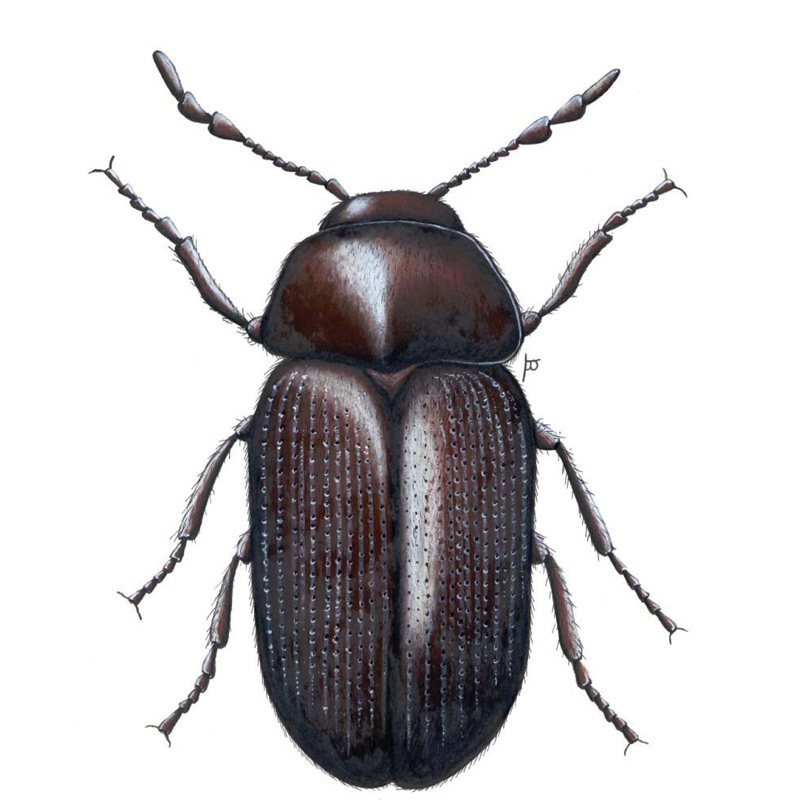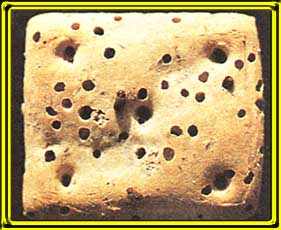
Cracks and crevices, which may provide harbourages for the beetles, should be kept to a minimum.Ĭommodities should be stacked neatly above the floor level using pallets, away from walls and should not touch the ceiling. They should be insulated, well ventilated and damp-proof. Stores should be soundly constructed to ensure maintenance of correct storage conditions and allow for easy cleaning. Whatever system is employed adequate records must be kept. These include pit fall traps, bait bags, insect probe traps, and adhesive traps. ControlĪ variety of trapping techniques are available for measuring stored product beetle infestations. On emergence, the adults disperse, living (without feeding) for up to 8 weeks. The pupal stage lasts 9-18 days, but the adults may then remain in the cocoons for up to two weeks before emerging. Eventually they become incapable of movement and construct cells of food particles and saliva in which to pupate.

Development takes 2-5 months, during which time the larvae go through four moults to reach a full-grown length of 5mm. At 19-24oC they hatch in 1-2 weeks to produce very tiny, active larvae which wander about and may penetrate packing to infest the foodstuffs inside.

Over a period of about 3 weeks the female Biscuit Beetle will lay, singly, about 100 eggs, either in the foodstuff or in the surrounding areas.

Books and manuscripts may also be attacked. Infested products may lose value or cause contamination of other products and packaging may be damaged, the larvae reputedly being able to penetrate tinfoil and sheet lead. flour, bread, breakfast cereals, spices, beverage, concentrates and even drugs - indeed there have been reports of it infesting poisonous substances such as strychnine, belladonna and aconite. Stegobium paniceum is a pest of cereal products, e.g. In a warm atmosphere there may be as many as four generations per year. It is widely found in shops and domestic larders, infesting a wide variety of dried vegetable matter. The Biscuit Beetle is a cosmopolitan pest. The larvae are able to penetrate tinfoil and sheet lead.Related species are the Tobacco Beetle ( Lasioderma serricorne) and the Common Furniture Beetle ( Anobium punctatum). Infested products may be contaminated and products and packaging may be damaged. In a warm atmosphere, there may be as many as four generations per year.īiscuit beetles feed on a wide range of cereal crops and beverage concentrates. It lays its eggs on a food source and once they begin to hatch the larvae continue to feed on the food.

These insects are winged but tend to travel by transferring from one food source to the next. With such a varied diet it is found in a wide range of places, as it will survive on any type of food. flour, bread, it is an indiscriminate eater and will feast on a wide variety of products from furs and leather to spices and even pharmaceutical products. It is also a serious pest of agricultural grain storage.Ī pest of cereal products e.g. They are fond of warmth and so are widely prevalent in shops and domestic larders, infesting a wide variety of dried matter and stored food products. The Biscuit Beetle, which is also commonly known at the Drugstore Beetle, has distinctive longitudinal grooves along its wing cover and its antennae end in three enlarged segments.Ī cosmopolitan pest, it can be found all across the world but is particularly prevalent in warmer regions and can survive in heated structures in more temperate climates. The have a cylindrical body that appears to be humped and are covered in dense short yellowish hairs. Oval shaped and reddish-brown in colour, the adult is 2-3.5mm long.


 0 kommentar(er)
0 kommentar(er)
